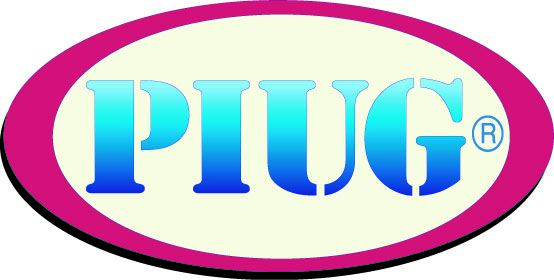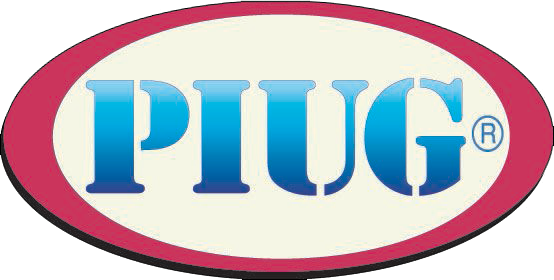WIPO TISC* Program is offering a webinar "Overview of the WIPO Guide on Using Inventions in the Public Domain" July 8, 2020, 9:00 AM - 9:45 AM EDT (3:00 PM CET)
How can inventions in the public domain add value to your products and services? How can you successfully develop new product concepts around inventions in the public domain? This webinar will introduce the newly published Guide on Using Inventions in the Public Domain, which includes practical steps and tools for integrating inventions in the public domain into products and services, and let you interact live with its lead author, James G. Conley, Clinical Professor of Innovation and Entrepreneurship at the Kellogg School of Management at Northwestern University. …
A registration link
*Note: This webinar is sponsored by WIPO's Technology and Innovation Support Centers (TISC) which provides innovators in developing countries with the following services: access to online patent and non-patent (scientific and technical) resources and IP-related publications; assistance in searching and retrieving technology information; training in database search; on-demand searches (novelty, state-of-the-art and infringement); monitoring technology and competitors; basic information on industrial property laws, management and strategy, and technology commercialization and marketing.
A cited Guide:
Using Inventions in the Public Domain. A Guide for Inventors and Entrepreneurs. WIPO. 2020 76 p. (available online at https://www.wipo.int/publications/en/details.jsp?id=4502, or https://www.wipo.int/edocs/pubdocs/en/wipo_pub_1063.pdf)
Highlights::
MODULE I Defining the public domain and its relationship with patents. Sec. 2. Relationship between patents and the public domain (p.15) [6]
Fig. 1 IP and Public Domain. (Taken from [3, p.12]) (attached)
...potentially disputed territory” within which patent rights may be registered or granted but due to legal ambiguities may or may not be enforceable. Utility models most likely exist under “potentially disputed territory.”
3. Public domain in developing and least developed countries….For inventions disclosed in published patent documents, most of this knowledge is free to use by those individuals who live in developing countries and LDCs to the extent that local patent activity is non-existent or too limited to result in IP rights.
Module II Finding opportunities to leverage inventions and public domain knowledge. This module defines the role of public domain knowledge as disclosed, for example, in patents, for identifying opportunities for developing and taking products to market. (1. Relationship between inventions and patents; 2. Territorial scope of patent protection; 3. Examples of useful information found in patent publications)
Module III Integrating public domain knowledge into product development processes. …Anticipate market risks and opportunities by using patent and non-patent literature to conduct technology intelligence and competitive intelligence; Use patents as a reliable source of information when using product development design tools such as TRIZ.
5. Reviewing what technologies are already in the market (Search for competitors patent and patent applications; keywords and classification searches (reference to "Identifying Inventions in the Public Domain: A Guide for Inventors and Entrepreneurs (2020)”]); combining search results from patent searches and market studies: Example 8, p.43)
6. Finding if there are available technologies you can exploit to identify market opportunities
6.1 Patent intelligence based on patent database searches, patent statistics and reports (p.44-48) Defines Novelty and FTO searches [FTO: citing [39] and referenced to “Identifying Inventions in the Public Domain...]; importance of prosecution histories, patent statistics and patent families are mentioned, as well as importance to combine patent searches with “non-patent literature (NPL), such as trade reports, market trends, scientific publications, trade announcements, white papers, technology roadmaps, legal and regulatory developments”.[p.44,46]
From Helpful tips "…There may be a trade-off between the cost of a patent search and its opportunity cost. Professional patent searches may produce better results and ultimately be cost-effective based on the complexity of such searches and [inventors] familiarity with the technical field and jargon in the applicable fields of use." (p.46)
6.2 Relevant patent identification A flowcharts is given with steps of refining patent search results. (p. 47-48)
8. Screening product concepts (...8.3 Using competitive intelligence and technology intelligence; 8.4 Assessing competitive advantage through competitive intelligence (citing [44]); 8.5 Technology intelligence through patents to study evolving technology trends and innovation (citing [49-51]); 8.6 Assessing the ability to build a team and obtain stakeholders’ support; 8.7 Protecting IP in feasible products)
9.2 Solution of a technical problem through TRIZ (based on patent analysis, see Example 14, p.62-63)
9.4 Design for manufacturing and technology risk management (FTO analysis for manufacturing prcesses; options for ensuring the patents of others do not affect FTO)
9.4 Design for manufacturing and technology risk management (FTO analysis for manufacturing prcesses; options for ensuring the patents of others do not affect FTO... "In the case where filing for patent protection is likely, technology discovery and forecasting searches should be international and include non-patent searches to look for publicly available materials like competitors’ product and/or service brochures, presentations at conferences and exhibitions, scientific publications with authors working for a competitor or funded by it, sales announcements, advertisements, press articles, etc., as well as interviews with people who sit on nodal points for communications about technologies of interest." (p.66))
Selected References.
3. Conley, J.G., P.M. Bican and N. Wilkof (September 16, 2013). Study on Patents and the Public Domain (II). (CDIP/12/INF/2 REV). WIPO. 70 p.
6. Phillips, J., M. Sibanda, H. El Saghir, E. Rengifo García, O.P. Orlyuk and C. Gabriel (February 28, 2012). Study on Patents and the Public Domain. (CDIP/8/INF/3 REV. 2). WIPO. 10p.
39. Burrone, E. (2005, Consultant of WIPO SME Division) “New Product Launch: Evaluating Your Freedom to Operate.” WIPO. A copy is now available at archive.org . See also Kowalski SP. 2007. Freedom to Operate: The Preparations. In Intellectual Property Management in Health and Agricultural Innovation: A Handbook of Best Practices (eds. A Krattiger, RT Mahoney, L Nelsen, et al.). MIHR: Oxford, U.K., and PIPRA: Davis, U.S.A. Available online at http://www.iphandbook.org/handbook/ch14/p02/. (citing Burrone’s article)
44. Murphy, C. (2006). “Competitive intelligence: What corporate documents can tell you.” Business Information Review, 23(1), 35–42. (Abstract)
49. Kerr, C., L. Mortara, R. Phaal and D. Probert (2006). “A conceptual model for technology intelligence.” International Journal of Technology Intelligence and Planning. (Abstract)
50. Kelly, B., D. Papanikolaou, A. Seru and M. Taddy (2018). “Measuring technological innovation over the long run.” 67 p.. NBER Working Paper 25266, National Bureau of Economic Research, Cambridge, MA. www.nber.org/papers/w25266.pdf. Accessed on July 8, 2020.
51. Schuh, G. and M. Grawatsch (2004). “TRIZ-based technology intelligence.” 13th International Conference on Management of Technology. 1–10. Available at http://citeseerx.ist.psu.edu/viewdoc/download?doi=10.1.1.200.5808&rep=rep1&type=pdf. Accessed on July 8, 2020.
Cited Guides:
Identifying Inventions in the Public Domain: A Guide for Inventors and Entrepreneurs (2020). WIPO. 116 p. www.wipo.int/publications/en/details.jsp?id=4501
WIPO Guide to Using Patent Information (2015). 44 p. www.wipo.int/publications/en/details.jsp?id=180
WIPO Guidelines for Preparing Patent Landscape Reports (2015) 131p [prepared for WIPO by Anthony Trippe, Patinformatics, LLC]. www.wipo.int/publications/en/details.jsp?id=3938
Note: WIPO Webinar: Overview of the WIPO Guide on Identifying Inventions in the Public Domain, July 16, 2020, 9:00 AM - 9:45 AM EDT (15:00 - 15:45 Geneva time/CET), A registration link
 Search
Search Community
Community Job Board
Job Board
